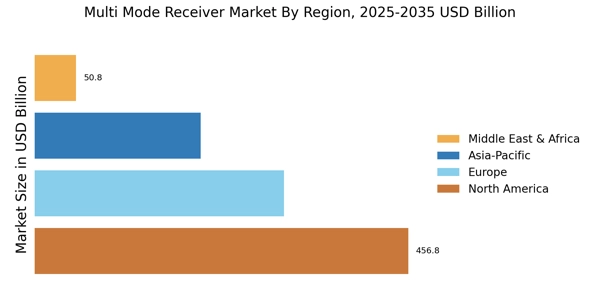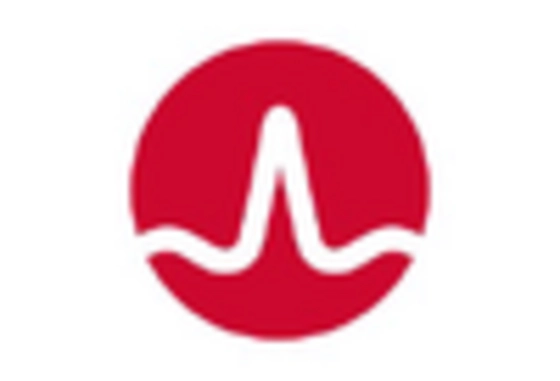Rising Demand for Enhanced Connectivity
The demand for enhanced connectivity is a primary driver in the Multi Mode Receiver Market. As industries increasingly rely on seamless communication for operations, the need for multi mode receivers that can handle various signal types becomes critical. This demand is particularly evident in sectors such as automotive, aerospace, and consumer electronics, where connectivity is paramount. The proliferation of Internet of Things (IoT) devices further amplifies this need, as these devices require robust and versatile communication solutions. Market analysts estimate that the demand for multi mode receivers will rise significantly, with projections indicating a market size reaching several billion dollars by 2028, reflecting the growing emphasis on connectivity across multiple platforms.
Focus on Miniaturization and Portability
The trend towards miniaturization and portability is reshaping the Multi Mode Receiver Market. As consumer preferences shift towards compact and lightweight devices, manufacturers are compelled to innovate and develop smaller receivers without compromising performance. This trend is particularly relevant in the consumer electronics sector, where portable devices such as smartphones and tablets dominate the market. The ability to integrate multi mode receivers into smaller form factors is becoming a competitive advantage for manufacturers. Reports suggest that the miniaturization trend could lead to a 15% increase in market share for companies that successfully adapt their products to meet these consumer demands, thereby driving growth in the multi mode receiver segment.
Emerging Applications in Automotive Sector
The automotive sector is emerging as a significant driver for the Multi Mode Receiver Market. With the rise of connected vehicles and advancements in automotive technology, the demand for multi mode receivers that can support various communication protocols is increasing. These receivers are essential for enabling features such as vehicle-to-everything (V2X) communication, which enhances safety and efficiency on the roads. As automotive manufacturers strive to integrate more advanced connectivity features into their vehicles, the market for multi mode receivers is likely to expand. Projections indicate that the automotive sector could account for a considerable share of the multi mode receiver market, potentially reaching several billion dollars by 2030.
Increased Investment in Defense and Aerospace
Increased investment in defense and aerospace sectors is significantly influencing the Multi Mode Receiver Market. Governments worldwide are allocating substantial budgets towards enhancing communication systems for military applications, which often require advanced multi mode receivers capable of operating in diverse environments. This trend is driven by the need for secure and reliable communication channels in defense operations. Additionally, the aerospace industry is also investing in next-generation communication technologies, further propelling the demand for multi mode receivers. Analysts predict that the defense and aerospace sectors will contribute to a substantial portion of the market growth, with investments expected to exceed billions of dollars in the coming years.
Technological Advancements in Communication Systems
The Multi Mode Receiver Market is experiencing a surge in technological advancements, particularly in communication systems. Innovations such as software-defined radio and advanced signal processing techniques are enhancing the capabilities of multi mode receivers. These advancements allow for improved data transmission rates and increased reliability in various applications, including telecommunications and military communications. The integration of artificial intelligence and machine learning algorithms into receiver technology is also becoming prevalent, enabling smarter and more adaptive systems. As a result, the market is projected to grow at a compound annual growth rate of approximately 8% over the next five years, driven by the need for more efficient and versatile communication solutions.

















Leave a Comment